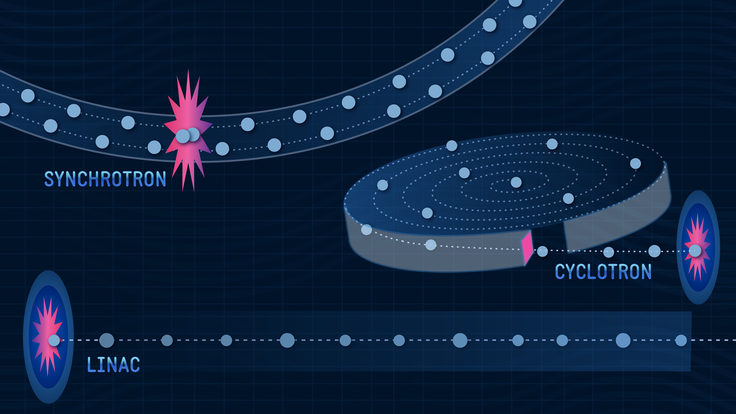Deconstruction: COUPP bubble chamber
Bubble technology bursts into 21st century
by Tona Kunz
 |
| Photo #1 |
 |
| Photo #2 |
Donald Glaser of the University of California, Berkeley, won a Nobel Prize for inventing the bubble chamber in 1952 as a way of detecting subatomic particles. Now a University of Chicago professor, Juan Collar, is leading the charge to make the bubble chamber cool and cutting-edge again.
Collar is the spokesman for COUPP, which stands for Chicagoland Observatory for Underground Particle Physics. The heart of the experiment is a thin-walled quartz bell jar (see "a" in photo #1) kept deep underground at Fermi National Accelerator Laboratory. It attempts to catch WIMPs, or weakly interacting massive particles leading candidates for the mysterious dark matter that makes up roughly 85 percent of the matter in the universe.
The liquid in a bubble chambertypically hydrogen is kept just above its normal boiling point, but under enough pressure that it will not boil unless disturbed. When a charged particle zips through the liquid it triggers boiling along its path, visible as a series of small bubbles (see "b" in photo #1). In the early days of high-energy physics, bubble chambers were a staple; but in the past two decades, scintillating wire and gas chambers proved more versatile and effective in particle detection, nearly relegating the bubble chamber to extinction. COUPP researchers think that with a few modifications the chamber can make a strong comeback.
The biggest limitation for bubble chambers of the past was an inability to keep the liquid (see "c" in photo #1) in a superheated state for an extended period of time. This required operators to time short blasts of particles from an accelerator to the few milliseconds when the temperature was just right. The COUPP collaborators got around this by finding a way to keep their liquid on the verge of boiling 80 percent of the experiment time, increasing the probability of catching dark matter particles.
Once the bubbles reach a millimeter in size, researchers take snapshots (see photo #1 and #2) of the chamber with a digital camera and compare them, looking for particular changes in the rate of bubble production the signature of dark matteras the sensitivity of the chamber is varied. After each photograph, the chamber sits idle for about 30 seconds as the heat dissipates; it is then reset and ready to record another series of bubbles.
One advantage of the bubble chamber over other dark matter detection devices is the ability to switch the type of liquid in the detector with minimal effort and cost. Since WIMPs and other particles would trigger the formation of bubbles at different rates in different liquids, this allows the experiment to cross-check its own results, making sure that WIMP detection was not an anomaly.
Physicists theorize that dark matter particles interact with ordinary matter via mechanisms that are either dependent or independent of the nuclear spin of the atoms in the detector material. The chamber has shown promise for spindependent results but lags behind some other dark matter experiments in spin-independent sensitivity.
COUPP recently finished a year-long experiment using a one-liter chamber (see photo #2) placed about 100 meters underground in a tunnel built for another experiment at Fermilab. The results, combined with the findings of other dark matter searches, contradict claims for the observation of such particles by DAMA, the Dark Matter experiment in Italy, and further restrict the hunting ground for physicists to track their dark matter quarry. If the DAMA result had been due to spin-dependent WIMPs, then COUPP researchers should have found hundreds of WIMPs. They found none.
Scientists now are testing a 30-liter chamber; the larger size increases the possibility that the elusive WIMP will land inside. They hope to move that chamber to an even deeper tunnel whose extra layers of dirt and rock will further reduce interference from particles that are part of the natural background.
The COUPP bell jar, which is enclosed in a steel vessel, contains a liter of iodotrifluoromethane, a fire-extinguishing liquid known as CF3I. When a particle enters the jar and hits the nucleus of an atom in a CF3I molecule, it triggers the evaporation of a small amount of CF3I. The ensuing bubble grows and eventually become large enough for researchers to see. A WIMP is expected to leave a single bubble (see "d" in photo #2), similar to the one in this image, in contrast to the multi-bubble tracks left by other particles.
Click here to download the pdf version of this article.






